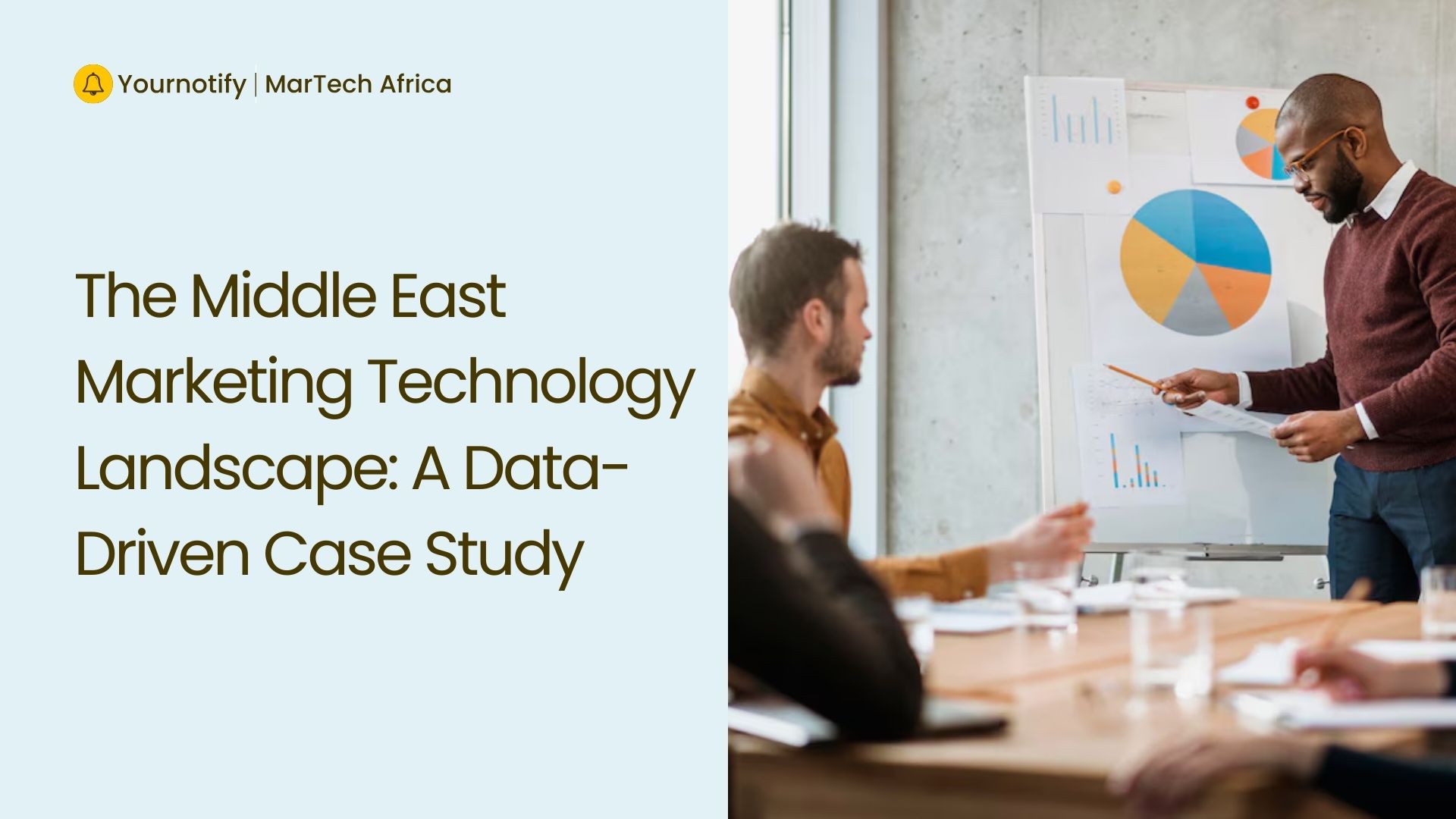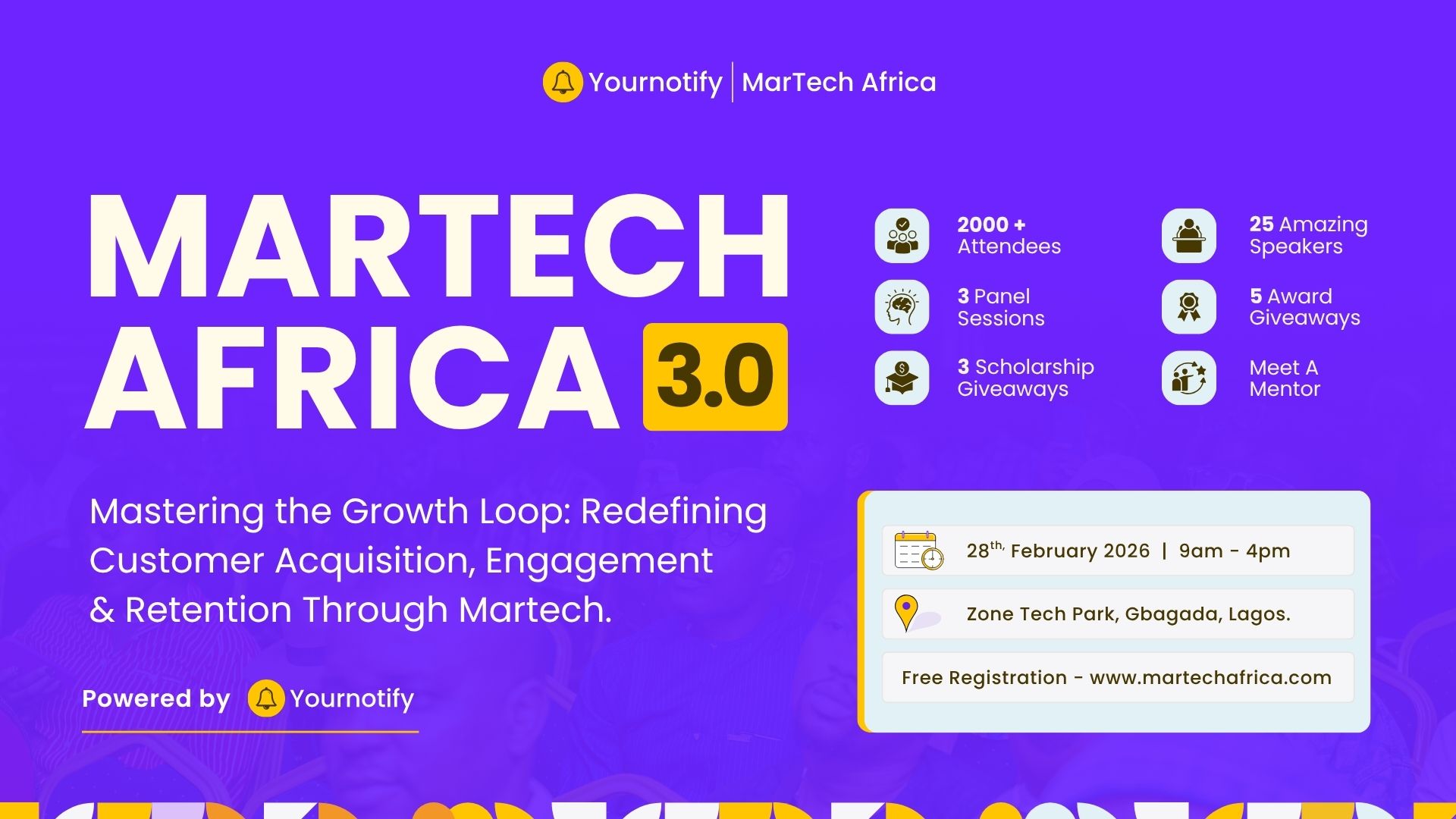For many African businesses, growth has traditionally been viewed as a linear journey: attract customers,…

The Middle East Marketing Technology Landscape: A Data-Driven Case Study
The Middle East marketing technology landscape and Africa accounted for the largest portion of the global marketing technology market, which was valued at USD 414518.6 million in 2024 and is expected to grow at a compound annual growth rate (CAGR) of 20.2% between 2024 and 2031. The market was valued at USD 8290.37 million in 2024.
The Africa and Middle East Marketing Technology Landscape (market) and Africa is expanding, driven by increasing digital transformation and rising investments in technology infrastructure. Growing urbanization and improved internet accessibility are fueling the demand for advanced marketing solutions.

Source: Cognitive Market Research
Businesses in the region are embracing data-driven strategies to reach diverse audiences, boost brand visibility, and make their marketing more effective. Thereby pushing the market to grow and expand even further.
Read more related articles: Why marketing technology is essential for the growth of African businesses in 2025
The Rise of Marketing Technology in the Middle East
With internet penetration surpassing 90% in several Middle Eastern countries, digital marketing has become a basis of business strategy. According to recent reports, the region’s digital advertising spend was expected to reach $7.9 billion by 2024, with a significant portion allocated to programmatic advertising, customer relationship management (CRM) tools, and artificial intelligence (AI)-powered marketing solutions.
Key drivers of MarTech growth in the Middle East include:
- E-commerce Boom: The rise of platforms like Noon, Amazon.ae, and Talabat has accelerated the demand for performance marketing tools and data analytics.
- Social Media Dominance: Countries like the UAE and Saudi Arabia boast some of the highest social media usage rates globally, influencing brands to take advantage of AI-driven influencer marketing and social listening tools.
- AI and Automation: Chatbots, predictive analytics, and machine learning algorithms are transforming customer interactions and campaign personalization.
- Regulatory Developments: Governments in the region are implementing data privacy regulations, such as Saudi Arabia’s PDPL, which came into effect on September 14, 2023, with a compliance deadline set for September 14, 2024, shaping how brands collect and utilize consumer data.
Challenges in the Middle East Marketing Technology Landscape
Bridging the Digital Divide
Many Middle Eastern regions, especially rural areas, lack reliable internet, limiting business reach and growth. Governments can address this through public-private partnerships, fiber optic expansion, digital literacy programs, and subsidized devices, ensuring widespread digital access.
The Talent Gap
Businesses face a shortage of skilled digital professionals. “Talent gap” can be a major roadblock for businesses in the Middle East. Upskilling internal teams fosters company-specific expertise, while outsourcing provides immediate access to global specialists. A balanced approach drives digital transformation.
Cybersecurity Challenges
As digital adoption grows, so do cyber threats. Businesses must implement tailored security solutions, conduct vulnerability assessments, and foster a cybersecurity-aware culture to protect data and operations.
Regulatory Complexity
Evolving Middle Eastern regulations create uncertainty. Staying updated, aligning with international best practices, and developing strong data governance ensures compliance while enhancing customer trust.
Cultivating Innovation
True digital transformation requires a mindset shift. Encouraging experimentation, promoting inclusivity, and investing in continuous learning fosters agility, resilience, and long-term success.
The Future of MarTech in the Middle East
Looking ahead, MarTech adoption in the Middle East is set to grow, driven by:
- Greater Investment in Localized Solutions: More regional startups will emerge, catering to Arabic-speaking audiences.
- Expansion of AI and Machine Learning: Enhanced automation will improve customer experience and marketing efficiency.
- Blockchain in Marketing: Secure and transparent transactions will redefine data sharing and ad verification.
- Metaverse and Virtual Reality (VR): Brands will explore immersive marketing experiences tailored to Middle Eastern consumers.
The Middle Eastern MarTech landscape is positioned for growth as businesses embrace digital innovation. While challenges exist, data-driven strategies, regulatory adaptation, and investment in emerging technologies will be important in shaping the future of marketing technology in the region.


